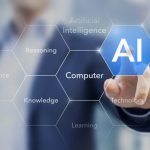Reporting from the other side: Why journalism needs VPNs

Getting news out of hostile territories can potentially be extremely risky, but it is key to making sure that suppressed voices are heard, and that the wider world is aware of what is happening in war zones and regions with unstable leadership.
While the rest of us worry about data security because we’re shopping and banking online, for journalists, an increased focus on this type of security is critical -- particularly for those operating in dangerous regions of the world. As valuable as digital data trails can be to an investigative reporter, they can also work the other way, resulting in a journalist’s identity and stories being revealed. Not only can leaked information limit a journalist’s ability to report the truth, it could also put them and their sources at significant risk.
Krisp reduces background noise on conference calls

The rise of homeworking means one thing, trying to focus on work whilst the family and daily chores are going on around you. Get on a conference call and you have to try and eliminate background noise to sound professional. When you’re on a call you suddenly realize how much noise is going on around you.
Get in the car and head to a coffee shop and you'll find there are people talking around you -- it’s no better at all. You just cannot seem to get away from surrounding noise. And that’s if you can even get a fast enough internet connection and a stable enough call to make it worthwhile and professional enough to impress the other callers.
Quickly migrate your user account to a new PC with the latest PCTrans 10

Boot into your brand new PC and you find you’re welcomed by rather a vanilla operating system, perhaps with a few key default apps installed by the manufacturer.
Although it’s initially interesting to start with a blank canvas, you soon realize not only do you have your most important applications installed but the settings and preferences all need to be setup again from scratch.
Digital workplace disruption in 2019: How job roles are shifting in the professional services industry

In 2018, digital workplace transformation across the professional services market finally began to take hold. Today, applications for professionals across accounting, insurance, consulting and other industries are actually providing anywhere and anytime access, seamless collaboration, intuitive experiences and smart capabilities.
For years, those who worked in the professional services market expected these capabilities from their applications, having used consumer tools like Google, Facebook and Amazon that provide a consistent, easy-to-use experience across every device, allow for straightforward collaboration with trusted friends and family, automate tedious tasks and anticipate needs based on preferences and past behavior. After first resisting these demands and then struggling to deliver such capabilities, 2018 saw the wide-scale emergence of comprehensive technology platforms that deliver mobile, intuitive, collaborative, secure, automated and smart digital workplaces. The digital transformation of the professional services market made professionals’ day-to-day tasks easier, reducing training and other costs for firms, increasing productivity and empowering professionals to be more creative.
Rethinking browsers

With browsers often in the middle of many corporate activities, it’s no wonder that they are now subject to many of the same challenges encountered on desktops, smartphones and other hardware-based endpoints. Many IT pros wouldn’t consider browsers to be a critical network endpoint, but those pros would surely place importance on mobile devices, laptops, desktops and servers. Given the valuable role browsers play in accessing enterprise applications and information, it’s time to rethink how we classify them and, more importantly, how we manage and secure them.
Mobility and cloud computing are taking over today’s workforce, and the browser’s significance is trending. The majority of office applications -- such as Microsoft Office 365, Salesforce CRM, and the Zoho One business suite -- run in the cloud and are accessible via browser. These kinds of applications allow users to work from anywhere, at any time, using their laptops, smartphones and other browser-enabled devices.
8 key factors for an effective Internet of Things (IoT) network

Connected devices, or the Internet of Things (IoT), are exploding on the market. Securing their access has become one of the major concerns in recent years. But security is only part of the equation. What good is a secure network if you cannot access it?
As more and more devices connect together, the availability to connect becomes paramount. If your business is going to depend on an IoT infrastructure, it must be available, accessible, and safe from attack. If you cannot count on your infrastructure, you cannot depend on it. When selecting an IoT platform, these are the sort of issues that should be considered.
Infrastructure is the missing piece to an autonomous future

Though you may have not noticed their arrival, autonomous vehicles are already here. While we currently experience automation’s convenience on a smaller scale -- like self-parking and lane-keeping capabilities -- fully-autonomous vehicles are projected to offer so much more. For example, fully-autonomous vehicles offer a potential for a 90 percent decrease in traffic fatalities. When you consider a stat like that, it’s no wonder many vehicle manufacturers and government officials are pushing for fully-driverless capabilities.
But a fully-autonomous future won’t become a reality on the efforts of vehicle development and manufacturing alone. Infrastructure updates, particularly in major U.S. cities, will be needed to accommodate these vehicles. As it stands, only six percent of these cities have a long-term infrastructure plan in place for autonomous vehicles to operate efficiently and safely. To create a safer tomorrow, infrastructure design needs to be addressed today.
Email security threats that can ruin your company's holiday season

Most people understand that retail becomes a target for cybercriminals during the holidays. But even businesses not related to the retail sector will often find the holidays their most vulnerable time of year. After all, many individuals (that is, employees) are focused on wrapping up projects before the holidays truly start or are looking ahead to the coming year with the added distraction that the holidays bring.
Businesses need to protect themselves from potential cybersecurity threats during the busy holiday season -- many of which will come in the form of the world’s most commonly used utility, email. In this post, we will take a look at some of the biggest on-premises and cloud email security threats your business faces this holiday season.
Real-time data center monitoring will continue to be the easiest way to cut costs in 2019

Energy costs are one of the fastest-rising expenses for today’s data centers and the global energy ecosystem as a whole. Not only do energy cost make up 70 to 80 percent of ongoing operational expenses, but data centers are projected to soon amount to the largest share of global electricity production, according to Huawei Technologies’ Total Consumer Power Consumption Forecast.
As new technologies enter the data center realm at an increasing rate, expectations for advanced operational environments capable of meeting energy demands are at odds with an ever-present demand to keep costs down. In fact, studies have shown that cost savings continue to be a main motivating factor when selecting data center management tools. While introducing new processes to data center operations -- like real-time data center monitoring -- is key to modernization at a low cost, researchers have found managers need the pressure of an imminent issue or decision to overhaul legacy tech to make the step towards adopting a data center manager tool.
AI: Cybersecurity friend or foe?

AI technology has become widespread and accessible to hundreds of thousands of IT security professionals worldwide. Human researchers are no longer behind their computers crunching the data and numbers, nor should they be when AI technology is available. The increase in computing power, especially through economical cloud solutions and easy-to-use tools, has allowed a much wider range of users to apply sophisticated machine learning and artificial intelligence algorithms to solve their problems.
At the same time, companies and security vendors have realized how difficult it is to fight cyber criminals who are constantly evolving to find new ways to infiltrate corporate networks without being spotted. For IT teams, updating and maintaining security solutions and policies to keep up with this volatile threat landscape is extremely costly and an unsustainable solution to protecting against incoming threats.
The elements of cybersecurity hygiene and secure networks -- Part 1

The two fundamental building blocks in ensuring that your data is secure are physical infrastructure and network security. Understanding and protecting your information from threats and human error requires meticulously layered security protocols.
Last year, British Airways canceled over 400 flights and stranded 75,000 passengers because of an IT outage caused by an engineer who disconnected a power supply at a data center near London’s Heathrow airport. When it comes to data centers and networks, even minor human errors can have a major impact on businesses and their customers. With the exorbitant costs and human resources required to maintain an on-premise system, organizations should look to public cloud companies. These companies bring capital and expertise to the table to properly manage their data centers, which are better protected than those that most companies could put in place themselves.
Edge computing changes everything, including your mobile strategy

It’s tempting to think of edge computing or the Internet of Things (IoT) strictly as something new that you’ll be adding to your enterprise architecture in the coming years. Your company has an enterprise architecture, and now thanks to the IoT revolution you’ll be adding lots of new internet-connected devices, which, depending on your line of business, might be actuators on a factory floor, sensors in a power station cooling tower, or GPS units on a fleet of tractor trailers.
But in reality, IoT and edge computing are not capabilities that are added separately to a company’s existing IT architecture and landscape. Rather, they need to be integrated into existing architectures to deliver on the company’s desired business outcomes.
Robocalls on the rise: What you should know

Smartphone owners are increasingly accustomed to picking up their phones and hearing recorded voices on the other end, meaning they've received robocalls.
Often, the recordings are threatening and mention taking action to avoid arrests or financial penalties. A human representative never comes into the equation unless the person receiving the call wants further information, usually by pressing a button on the phone's touchscreen.
Develop cross-platform apps using Google's Flutter

Speak to most app developers and they’ll tell you it’s much harder, more complicated and less interesting to produce an Android app, compared to iOS. Indeed, ask for a quote and both will be priced separately as both require separate development time and teams.
This might all be about to change with the final first release of a new cross-platform development tool from Google. Imagine a toolkit that you can use to program the functionality, allowing the UI framework to be provided to you separately and seamlessly.
Uniblue closes its doors for good

There are some firms you look at with a kind of wary admiration primarily because they were a marketing pioneer of their time. Or that’s what we thought.
Uniblue is one of these companies and, you should believe this is no understatement, it used to be major software developer, with adverts in every location, as little as eight years ago. Before it all went horribly wrong. Now Uniblue has closed the company for good with no prior warning whatsoever.
BetaNews, your source for breaking tech news, reviews, and in-depth reporting since 1998.
© 1998-2025 BetaNews, Inc. All Rights Reserved. About Us - Privacy Policy - Cookie Policy - Sitemap.
